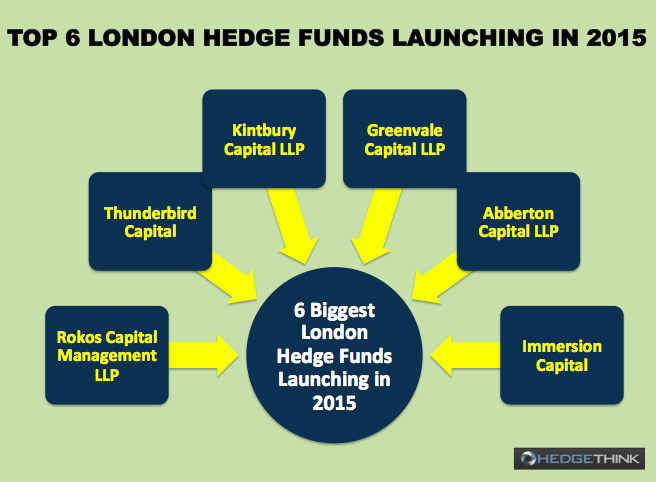A surge of new London hedge fund launches is coming this year following a boom year for big startups in the United States in 2014. A number of well connected managers are said to be preparing launches that will attract more than $1 billion. In the United States last year, at least five managers began independent funds that attracted that amount of capital.
Here’s a look at the high profile hedge fund launches expected in London in the year ahead, the managers organizing them and the strategies they’re going to follow to attempt outsized returns in 2015.
Rokos Capital Management LLP
One of the founders of Brevan Howard Asset Management, Chris Rokos is setting out his own hedge fund this year, after a high profile legal case, concerning his contract’s non-compete clause, was finally settled. With investments from himself and his Brevan Howard partner Alan Howard, the fund is expected to easily top assets of over $1 billion.
Rokos has, according to the Sunday Times Rich List, assets of more than 200 million pounds.
Thunderbird Capital
David Fear was one of the many high profile traders that lost their jobs as the Ziff Brothers, heirs to a publishing fortune, closed their family offices in a transformation of the way they handle their money. David Fear formed Thunderbird Capital earlier this year, with a strong reputation from his days managing that family’s money, the manager gathered $1.5 billion including investments from his former employers. Fear previously worked with Tiger Management, a fund that gave birth to many successful managers.
Kintbury Capital LLP
Christopher Dale, who made his name at Millenium Capital Partners, is said to have raised at least $200 million for his new fund, Kintbury Capital. The office is expected to open its doors in May, and is currently hiring staff for its debut. The firm will concentrate its efforts on finding value in equities, a model that Dale previously operated on at Millenium.
Greenvale Capital LLP
A former manager at the Citadel Investment Group, Bruce Emery is launching Greenvale Capital Management later on this year. The firm has reportedly already raised $200 million in capital, but may attract more investment before the fund actually launches later on this year.
Abberton Capital LLP
Frederik Juntti, another former Citadel manager, is the founder and Chief Investment Officer at newly minted Abberton Capital LLP. The fund had already raised around $250 million at the end of last year, and may be heading above $1 billion before its first year of existence is up. Abberton is going to be an event-driven fund,
Immersion Capital
Another former Ziff Brothers employee, Michael Sidhom is launching Immersion Capital with more than 600 million pounds in assets this year. The manager began to turn away potential investors after hitting that number, declaring that he had hit his target. The fund will invest in equities on both the long and short side.
Reaching $1 Billion
Reading through that list makes the attributes of a $1 billion hedge fund launch clear. Only managers who have previously attached their names to massive investment funds and can claim market-beating returns are ever going to be able to attract that kind of capital. Unfortunately for the rest of the hedge fund world, it’s becoming more and more difficult for smaller funds to attract cash.
Several recent surveys have shown that an increasing percentage of hedge fund investment is going to the biggest funds. Those with more than $1 billion are becoming the most important category as institutional investors become the premiere source of assets in the industry.
The way to reach the big time is changing. It’s becoming more and more important to advance to a high level in a major asset management firm and build up years of investing history. The make-up of hedge fund investments is changing, and the structure of firms is changing as a result.
$1 billion in assets under management is becoming a new basic unit in hedge fund calculation. Few institutional investors are going to be interested in a vehicle with less than that amount under control. As the population ages and pension funds get larger, that trend is going to get more and more distinct.
Paul Shea is an experienced money, trading and investing writer who cut his teeth writing stock, investment and industry analysis and covering macroeconomics. Paul Shea work has been linked and quoted by MSNBC, BusinessWeek, Barrons, Zerohedge and The Blaze, and his work appears regularly on Google News and Google Finance, as well as other prominent news aggregators. He’s also written about the tech industry for the likes of Valuewalk and The Street. Paul is a senior contributor writer for TradersDNA and HedgeThink.











































